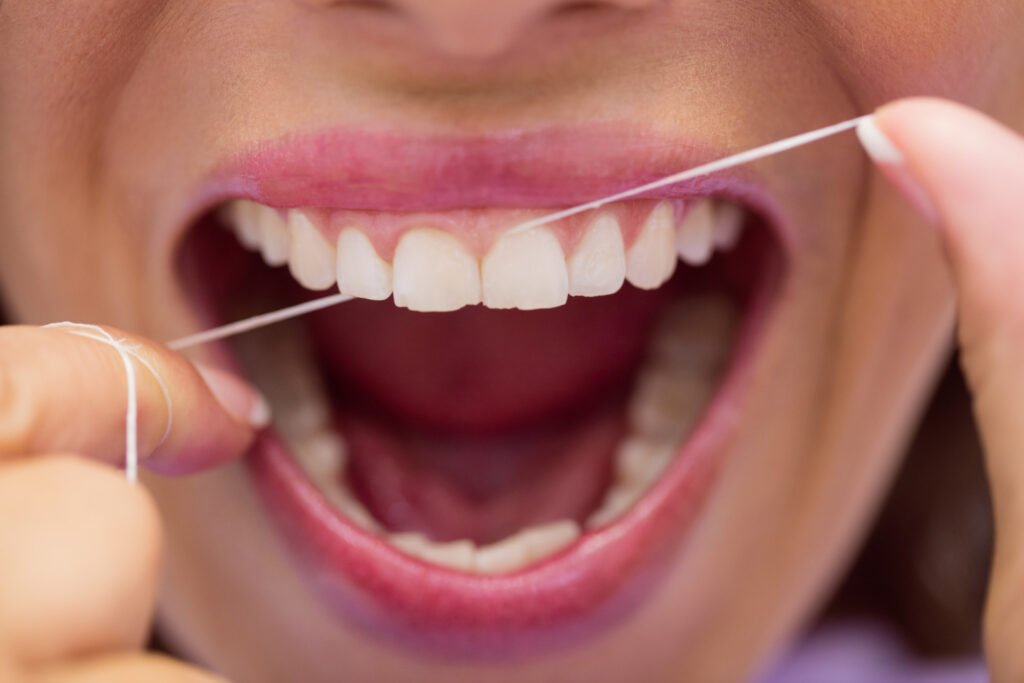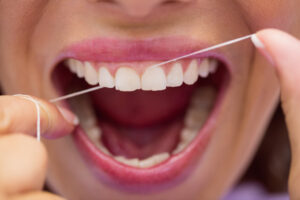Floss Like a Pro: Mastering the Art of Correct Flossing Technique

Floss Like a Pro: Mastering the Art of Correct Flossing Technique
Did you know that, despite its benefits, only 30% of Americans floss daily? Flossing is a crucial component of oral hygiene, yet it’s often overlooked or done incorrectly. Not all of us know how to floss correctly as well, putting our teeth and gums at risk of cavities and gingivitis.
Why Correct Flossing is Important
Prevent Gum Disease
Gum disease begins as gingivitis and can escalate to periodontitis, a much more severe condition that can lead to tooth loss. Regular and proper flossing removes plaque and food particles from places your toothbrush can’t reach, significantly reducing your risk of developing gum diseases.
Avoid Cavities
Cavities aren’t just a problem reserved for visible tooth surfaces; they also occur between teeth. Flossing does what brushing alone cannot—it cleans out the tight spaces between your teeth and under the gum line, removing plaque that leads to decay.
Overall Health Benefits
A growing body of research links oral health to overall health. Poor oral hygiene is linked to several serious health issues, including heart disease, diabetes, and respiratory illness. By maintaining good oral hygiene through correct flossing, you’re not only protecting your smile but also your broader health.
Maintaining good dental hygiene by knowing how to floss correctly is a direct investment in your overall health.
How to Floss Correctly
Choosing Your Floss
When selecting floss, you have a variety of options: waxed, unwaxed, thick, thin, and even dental tape. Waxed floss slides between teeth more easily, which is helpful if your teeth are close together. Unwaxed floss tends to squeak against clean teeth, indicating plaque has been removed, but can be harder to use if your teeth are very tight. Dental tape is broader and flatter than standard floss and can be more comfortable for people with wider gaps between their teeth.
The Right Amount
You should use about 18 inches of floss for each flossing session. This length allows you to use a fresh section of floss for each tooth without reinserting bacteria you just removed. Wind most of the floss around each of your middle fingers, leaving an inch or two of floss to work with.
Step-by-Step Guide
- Hold the Floss Firmly: Use your thumbs and index fingers to hold the floss taut. Make sure it’s tight enough to control but not so tight that it cuts into your fingers.
- Insert the Floss Gently: Slide the floss gently up and down between your teeth. Never snap the floss into the gums as this can damage delicate gum tissue.
- Curve the Floss: When the floss reaches your gum line, curve it into a C-shape against one tooth. Slide it gently into the space between the gum and the tooth until you feel resistance.
- Wipe the Tooth: Move the floss away from the gum, pulling it against the side of the tooth to scrape off plaque.
- Repeat: Repeat this process for each tooth. Be sure to use a fresh section of floss each time to avoid re-depositing debris and bacteria.
Following these steps will help ensure that you know how to floss correctly and that your flossing is effective, removing as much plaque and food particles as possible and contributing to a healthier mouth.
Common Flossing Mistakes to Avoid
Snapping the Floss
One of the most frequent errors in flossing is snapping the floss into the gums. This aggressive action can cause pain and damage to the delicate gum tissues. Always introduce the floss gently between the teeth and avoid forcing it down into the gum line.
Neglecting the Back Teeth
Without knowing how to floss correctly, it’s easy to focus on the front teeth because they are more accessible and visible, but the back teeth should not be ignored. These teeth are more susceptible to plaque buildup because they are harder to reach and clean. Make sure to floss the sides of the last molars, even though they do not have a neighboring tooth.
Reusing Sections of Floss
Using the same section of floss for multiple teeth can spread bacteria from one part of the mouth to another. This defeats one of the main purposes of flossing—removing plaque and debris to prevent dental issues. As you move from tooth to tooth, unroll a fresh section of floss from around your fingers.
Tips and Tricks on How to Floss Correctly and Effectively
Flossing Position
Finding a comfortable and effective position for flossing can make the routine easier and more likely to be performed regularly. Whether you prefer standing or sitting, make sure you have good lighting and a mirror to see what you’re doing. This allows for precise control and ensures that you don’t miss any areas, especially the back teeth.
Using a Floss Holder
For those who find wrapping floss around their fingers cumbersome or have physical difficulties that make manual flossing challenging, floss holders can be a great alternative. These Y-shaped devices hold a span of floss taut between two prongs, allowing for easier manipulation and access to the back of the mouth without the need to reach with your fingers.
Flossing with Braces
For individuals with braces, maintaining oral hygiene can be particularly challenging. Using a floss threader or orthodontic floss can help navigate around wires and brackets. These tools allow you to pull the floss through the teeth above the wires, making it possible to clean the gum line and the spaces between the teeth effectively.
Choosing the Right Floss
Types of Floss
Different types of dental floss cater to varying needs and preferences, making it essential to choose the right one for your dental health:
- Dental Tape: This is broader and flatter than standard floss and is often recommended for those with slightly wider gaps between their teeth.
- Standard Floss: Available in waxed and unwaxed forms, this is the most common type of floss. Waxed floss slides between teeth more easily, while unwaxed floss can provide a squeaky clean feeling that some find indicates their teeth are thoroughly clean.
- Super Floss: Ideal for cleaning braces, bridges, and wide gaps, super floss has stiff ends for easy threading under appliances and spongy sections to clean around them effectively.
Flavored vs. Unflavored
Flavored floss, such as mint or cinnamon, can make flossing a more pleasant experience, especially for children or those who dislike the taste of regular floss. However, unflavored floss is a great option for those who prefer no taste or have sensitivities to flavoring agents.
Eco-Friendly Options
For those concerned with environmental impact, there are several eco-friendly flossing options available:
- Bamboo Floss: Made from bamboo fibers, this type of floss is biodegradable and comes in eco-friendly packaging.
- Silk Floss: Another biodegradable option, silk floss breaks down naturally and is typically coated with beeswax for smooth flossing.
FAQs About Flossing
How Often Should I Floss?
Dentists recommend flossing at least once a day. The best time to floss is before bedtime to remove food particles and plaque accumulated during the day, which can lead to decay if left overnight.
Is Bleeding Normal?
Some bleeding is common if you are new to flossing or have not flossed in a while. However, if the bleeding continues after a few days of consistent flossing, it may indicate gum disease and you should consult your dentist.
Can Flossing Too Much Be Harmful?
While regular flossing is crucial, overdoing it can damage your gums and teeth. Flossing more than once a day is generally unnecessary unless advised by your dentist, and it’s important to ensure that you are using a gentle technique.
What If I Have Sensitive Gums?
If you have sensitive gums, using softer, waxed floss or a water flosser might help. It’s also essential to be gentle and avoid forcing the floss into your gums. If sensitivity persists, consult your dentist for personalized advice.
Is There an Alternative to String Floss?
Yes, water flossers are an excellent alternative for those who find string floss difficult to handle. They are especially useful for people with braces or fixed dental appliances. Water flossers use a stream of pulsating water to remove plaque and debris between teeth and below the gumline.
Addressing these frequently asked questions can help clarify common concerns and improve your flossing technique, ensuring you get the maximum benefit from your daily oral hygiene routine.
Choose Sunrise Dental of Redmond for Trusted Dental Care
At Sunrise Dental of Redmond, your oral health is our top priority. Since 2012, Dr. Kunal Narang and our dedicated team have been proudly serving the Redmond, WA, and greater Seattle community with a commitment to excellence and personalized dental care. As a family-owned and operated practice, we understand the importance of treating every patient like family, ensuring a comfortable and pleasant experience at every visit.
For a brighter, healthier smile, trust Dr. Narang and the Sunrise Dental team to provide the best dental care available in Redmond. Visit us today and experience dental care that goes the extra mile for you and your family.
Schedule your appointment today and discover why we are the preferred choice for dental care in the Redmond community.
Schedule Your Appointment Now
Schedule your appointment with the Best Dentist in Redmond, WA –
Dr. Kunal Narang and the team at Sunrise Dental of Redmond today.


